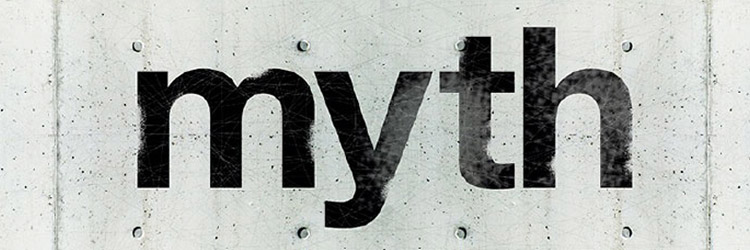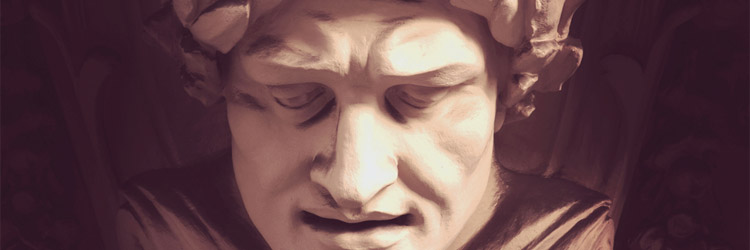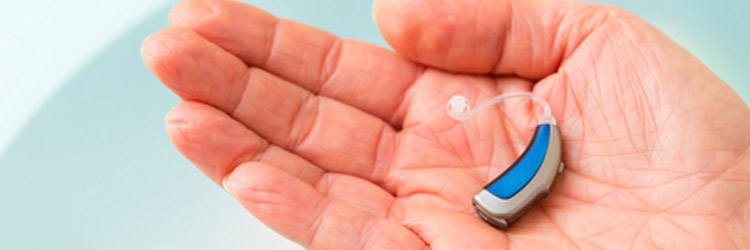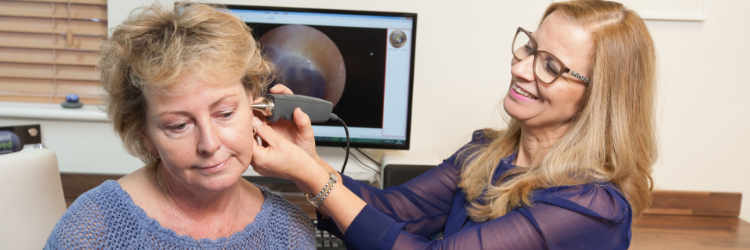
Common hearing aid myths
Technology is changing at a very fast pace, and it’s hard to keep up—with computers, with cell phones, and with hearing aids. If you’ve had experience with hearing aids in the past, or even if you’ve just heard about previous generations of hearing technology, it’s very likely that you have some misconceptions. Read our common hearing aid myths below to find out the truth.
Hearing Aid Myths
Let’s say you want to buy a phone, but your concept of a telephone includes a rotary dial: you’d be operating under some outdated ideas, wouldn’t you? The same holds true with hearing aids. Technology has changed a lot—even in just the last five years. If you are considering hearing aids, the best thing you can do is to dismiss any pre-existing ideas you have about hearing technology and then do your research with a clean slate. Here’s a bit of myth-busting to get you started.
Hearing Aid Myth 1. Hearing aids are only for old people – or they’ll make me feel old
People think having hearing aids means that you’re old, but that’s just not the case anymore. In fact, about two-thirds of those with hearing loss are younger than 64 years old. Hearing loss has many causes and affects people of all ages.
Wearable assistive technology is becoming more and more prevalent across age groups, as well. From wrist-bands that track your movement to in-ear Bluetooth devices to Google Glass, people are wearing technology for all kinds of reasons, making hearing aids a bit more status quo.
Hearing Aid Myth 2. Hearing aids are big, bulky, and unsightly
Today’s hearing aids are considerably smaller and more discreet than ever before, and they come in a wide range of colours, just like watches, handbags, and mobile phones. There are even hearing aids that can be placed completely within the ear canal so as to be totally invisible.
Selma Becker, owner and senior audiologist at Help in Hearing, agrees that the big, bulky hearing aid is a thing of the past. “Definitely people have this misconception: they think of the brown banana-shaped hearing aid, the huge BTE [behind-the-ear] hearing aid,” she says. “Things have changed so much: hearing aids are stylish; they’re discreet; they’re easy to use.”
Hearing Aid Myth 3. Hearing aids are only for people with severe hearing loss
Anyone who’s seen fuzzy newsprint spring into focus when they put on a pair of reading glasses can tell you that vision correction isn’t just for people with severe myopia. In the same way, hearing aids can greatly assist people with mild to moderate hearing loss, and many models are intended for just that. Even with mild hearing loss, you may be missing out on conversations with grandchildren, the sounds of birds singing, elements of your favorite music, and more.
It’s also important to correct hearing loss when it first begins, for a variety of reasons. Treating hearing loss isn’t just cosmetic. We hear with our brains, we don’t really hear with our ears. The ears just turn the sound into a signal that the brain can interpret. Controlling our hearing pathways also seems to help with memory, helps people connect socially, and all of those factors contribute to ageing in a more graceful way. It lets you live your life on your own terms. Also the longer a person has gone with hearing loss, the more rehabilitation and “re-forging of neural pathways” they need in order to accurately translate sound into meaning again.

Hearing Aid Myth 4. Hearing aids make everything sound too loud
This is another thing that has changed. Thirty years ago, people were always fiddling with their hearing aids, turning them up, turning them down. A lot of times it was an all-or-nothing thing. But nowadays, hearing aids can be adjusted in extremely minute increments. Many have a variety of programs you can use for various situations: some will adjust automatically, and some have remote controls for discrete adjustment. It’s important to continue working with your audiologist until you’ve got the right fit.
Hearing Aid Myth 5. Hearing aids can’t help with my tinnitus
Nowadays, some hearing aids come with a special tinnitus program that provides background noise or other features to help minimise the effects of tinnitus. By reducing the effect of the tinnitus while simultaneously increasing hearing, especially through digital streaming to both ears, this technology can make an enormous difference.

Hearing Aid Myth 6. I only need one hearing aid because I only have hearing loss in one ear
Sound comes from every direction. Certainly, wearing a hearing aid in one ear will help in a one to one and quiet situation. However, most people lose their hearing in both ears and in order to maintain the balance of sound, which allows the brain to recognise where sound is originating from, we need to wear hearing aids in both ears. These advanced digital hearing systems stream constant messages between each other, measuring and calculating sound in real time, making it much easier to understand speech in really challenging and noisy background situations.
Hearing Aid Myth 7. Hearing aid representatives are untrustworthy
As with any professional you choose, from solicitor to dentist, you should always make sure you feel completely comfortable with your hearing care professional. Some things to ask about include:
- Professional accreditations: Read more about buying hearing aids privately in this Which? report
- Philosophy and approach to treating hearing loss
- Professional experience
- Commitment to your community
- Particular experience with the kind of hearing loss you have
- References
Hearing Aid Myth 8. Follow ups aren’t necessary; they’re just a way for audiologists to charge me more money.
On the contrary, follow-up visits are the only way to make sure your hearing aids are adjusted properly and working optimally. Using state-of-the-art equipment for example, we can tell how well the hearing aid is performing and measure what is coming out of the hearing aid and make adjustments as necessary. Ongoing aftercare is vital to ensure you are getting the best possible hearing quality from your hearing aids. I can’t tell you the number of clients who have come to us from some of the national chains where there was no after-care and the client abandoned their hearing aids after a few weeks because there wasn’t an opportunity to go back and have them adjusted. Our ongoing aftercare is part of the price of the hearing aids, and includes follow up visits from the initial supply and fitting of the hearing aids to six monthly check ups, annual reviews and a walk in cleaning/repair service at our Farnham Common practice.
Hearing Aid Myth 9. Hearing aids will work perfectly right away, like putting on a pair of glasses
Treating loss of hearing is quite a bit different than treating loss of vision, and it almost always takes a couple of sessions to get things just right. This is partly a matter of making sure the hearing aids are adjusted correctly, but also of re-training the brain to interpret and prioritise sounds. We’ve noticed that the biggest surprise for new hearing aid users is how noisy the world is!
Audiologists use specific techniques to help minimise the surprise of hearing again. Usually, with a first fitting, we don’t set the hearing aids to the full prescription, instead allowing patients to adjust incrementally. It can take about three visits to get the hearing aids completely dialed in. People have to retrain their brains to filter out some of those loud sounds and also re-learn what sounds require their attention. The ticking of the clock and the hum of the fridge are sounds they may not have heard for a while, and it takes time to train the brain to ignore them again.
After a while, though, the important sounds stand out. People can hear their grandchildren, not just pretend that they did, they can hear the impact sound when they hit their golf ball, but it all takes time to adjust to these sounds.

Hearing Aid Myth 10. If I don’t like my hearing aids, I’m stuck with them. It’s a big decision and I won’t know if I’m making the right one until it’s too late
Through a process of detailed testing and examination, we make sure that the right hearing product is chosen for you. We then work with you to make sure that the chosen product is right, by having regular reviews. At Help in Hearing, we’re there to provide whatever suport you need after the initial purchase of your hearing aids. On many occasions we find that a client’s hearing aid needs adjusting or reprogramming to suit different circumstances and environments, and this is all part of the service we offer, for the life of your hearing aids. This type of ongoing service and support is not always available from the national chains, even though they may seem cheaper at first glance.
Hearing aids – How to find out more
If you’d like to discuss whether you need hearing aids, please contact us (see links below) to discuss your needs. We can carry out a full hearing test at a time to suit you. Our hearing clinics in Farnham Common and Marlow are fully equipped with the latest cutting edge testing facilities, thus enabling us to carry out entirely accurate hearing assessments, and consequently advise on the best possible solution, should you wish to proceed with our recommendation.
To get in touch, please email us or call us on 0345 222 0579. Alternatively please fill our our contact form.




This Post Has 0 Comments